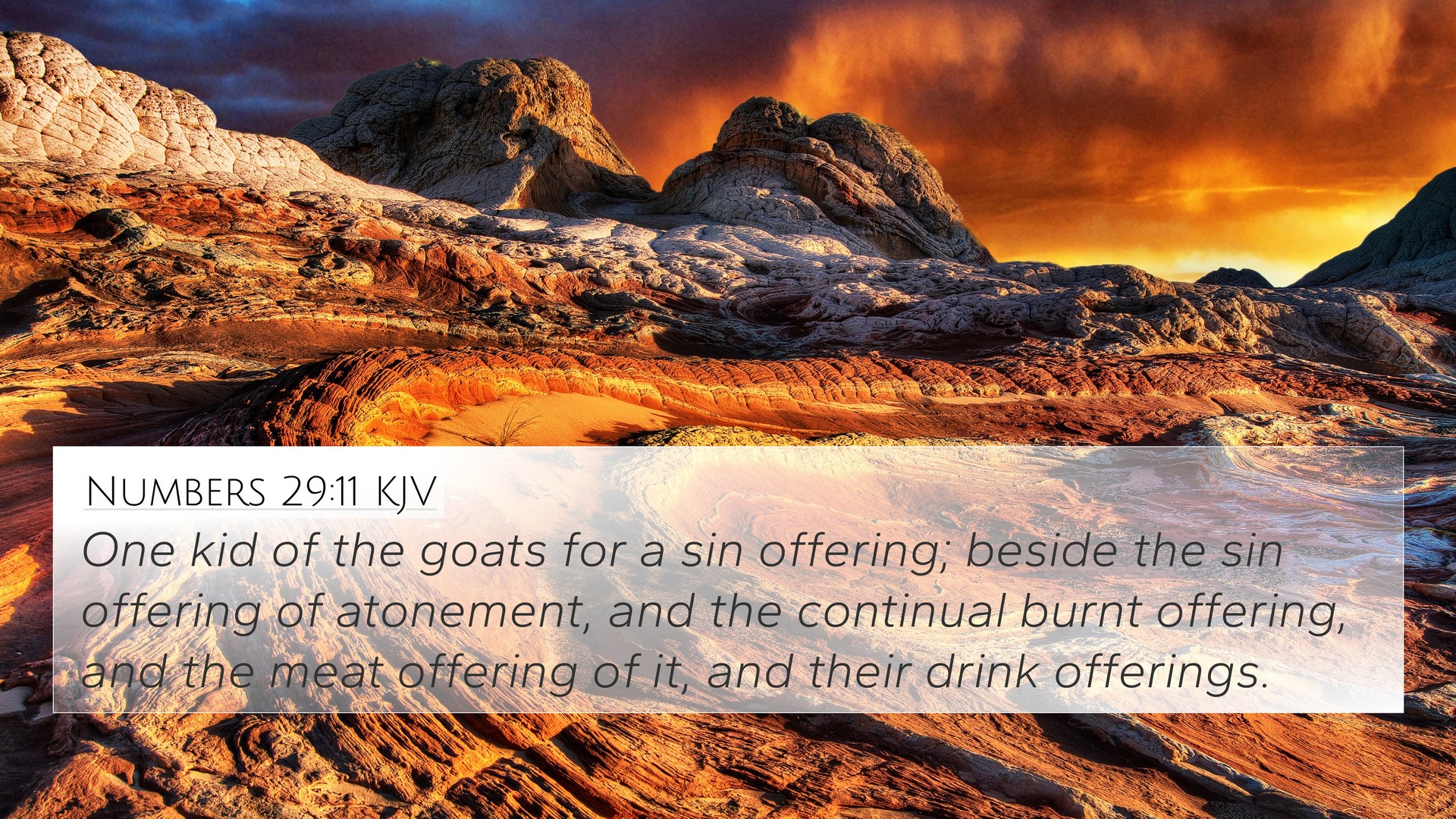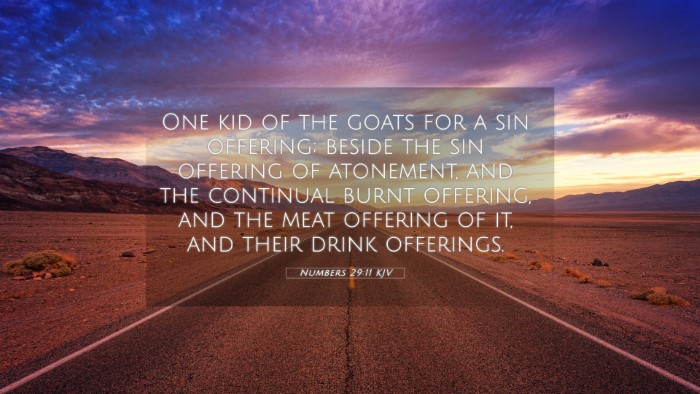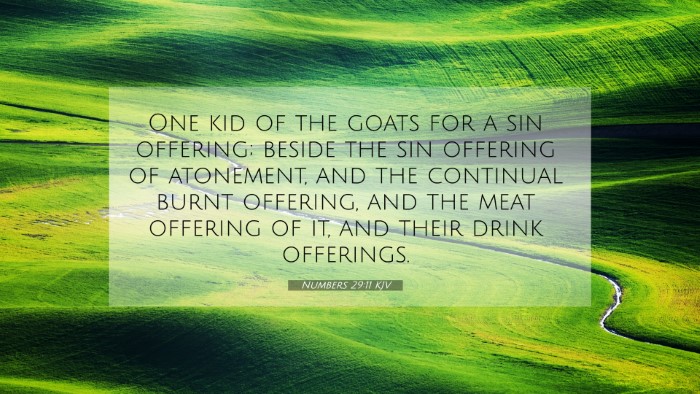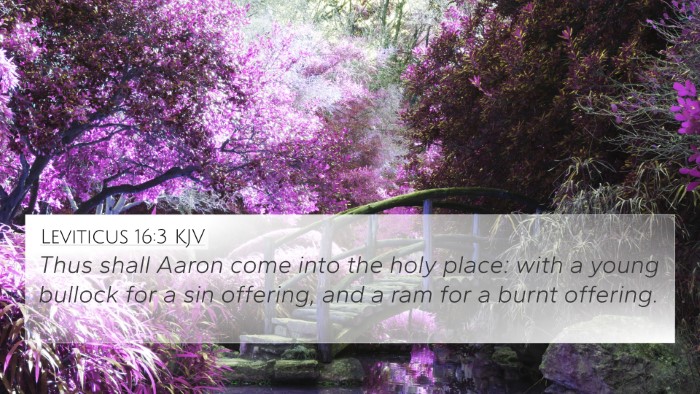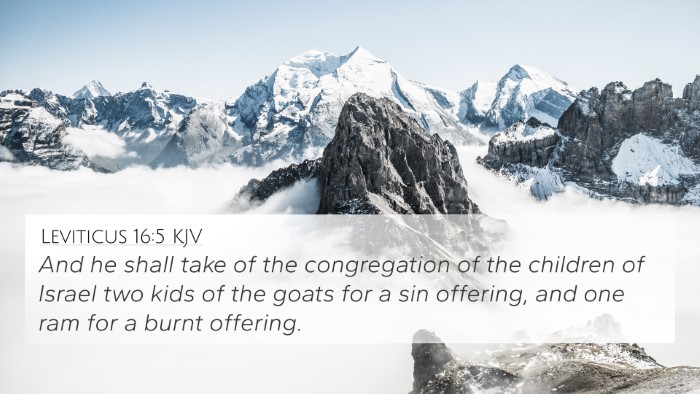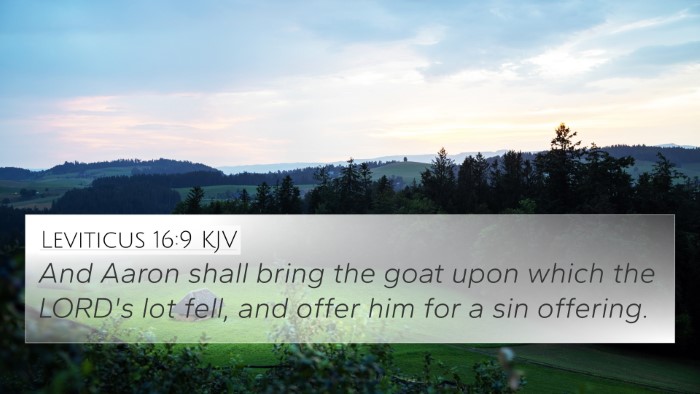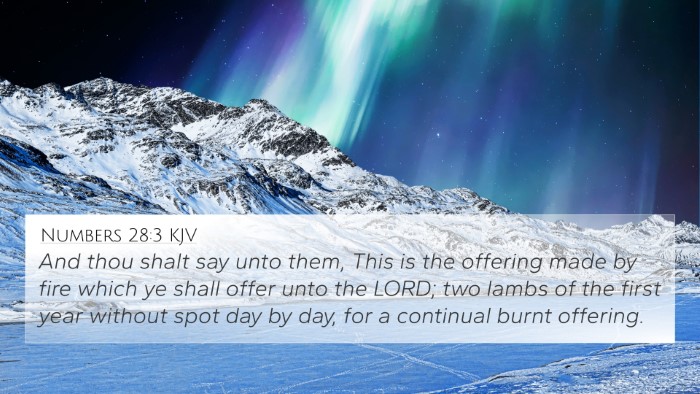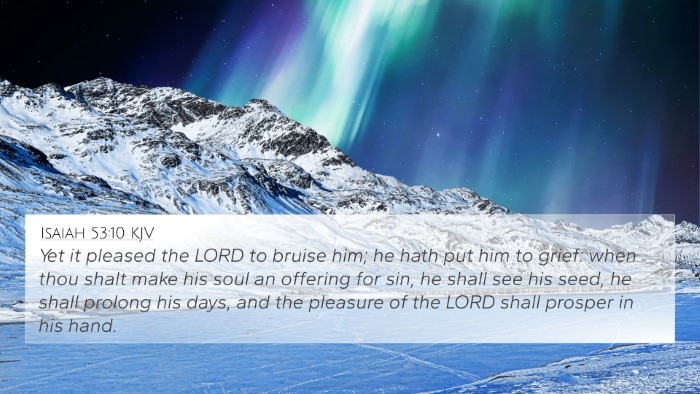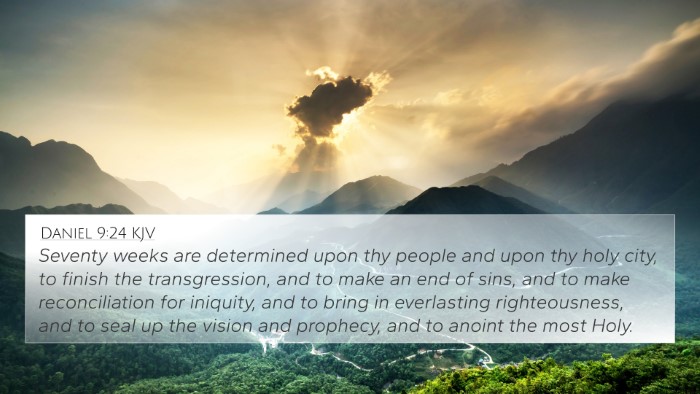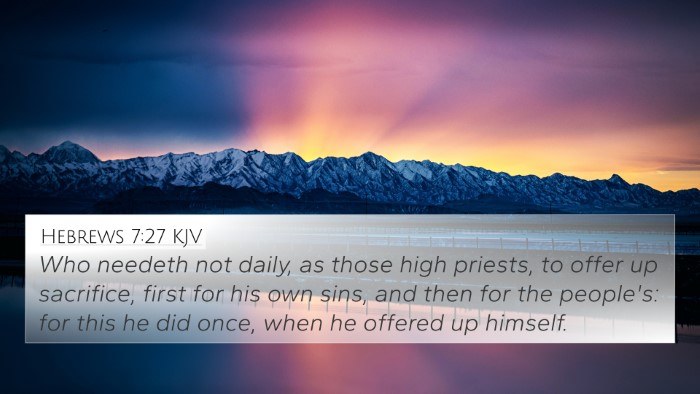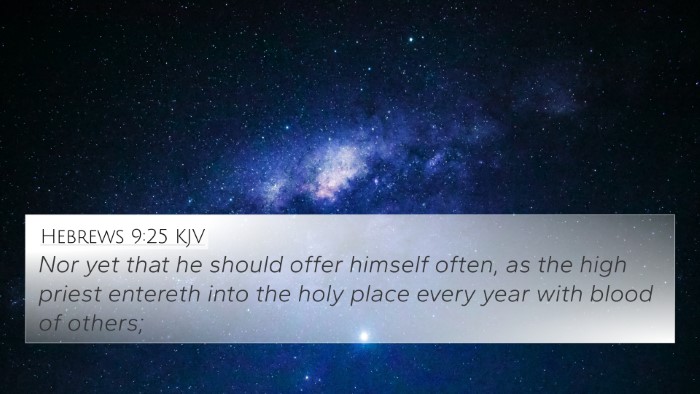Understanding Numbers 29:11
In the book of Numbers, we find various instructions regarding the offerings and sacrifices during the Jewish festivals. Numbers 29:11 states:
"And one kid of the goats for a sin offering, beside the sin offering of atonement, and the continual burnt offering, and the meat offering of it, and their drink offerings." (Numbers 29:11)
Meaning and Context
This particular verse is part of the instructions for the observance of the Feast of Tabernacles, emphasizing the significance of sacrifices in the worship of God. Understanding this verse requires some insights from various commentaries.
Commentary Insights
- Matthew Henry: Henry emphasizes the importance of the sin offering as a means of atonement. In this context, the "kid of the goats" symbolizes purification and a recognition of human sinfulness. The continual burnt offering serves as a constant reminder of the need for redemption.
- Albert Barnes: Barnes notes that the inclusion of the sin offering in this festival highlights God's mercy and grace. The various offerings represent different aspects of the relationship between God and His people, illustrating a comprehensive approach to worship that acknowledges both gratitude and repentance.
- Adam Clarke: Clarke elaborates on the ritual aspects of the offerings, noting their communal significance. He points out that these offerings were not just individual acts of devotion but were performed in the context of communal worship, reinforcing the idea of collective accountability before God.
Bible Verse Cross-References
To fully grasp the meaning of Numbers 29:11, it is beneficial to explore other related scriptures. These cross-references can provide deeper insights and connections.
- Leviticus 4:24: This verse speaks about the sin offering and its significance in atonement.
- Hebrews 10:4: A reminder that the blood of goats and calves does not atone for sin, indicating the need for Christ's ultimate sacrifice.
- Exodus 29:38-42: Instructions about the continual burnt offerings, offering parallels with the context of worship in Numbers 29:11.
- Romans 3:23-25: This New Testament passage underlines the universal state of sin and the provided grace through faith in Jesus Christ.
- 1 John 2:2: Affirming Jesus as the propitiation for our sins, connecting directly with the concepts of offering and sacrifice presented in Numbers.
- Isaiah 53:6: Speaks to the nature of atonement and the sacrifice of Christ, providing an understanding of the fulfillment of offerings in the New Testament.
- 2 Corinthians 5:21: Explains how Christ became sin for us, emphasizing the substitutionary aspect of sacrifices.
Thematic Connections
The themes evident in Numbers 29:11 resonate throughout scripture, forming connections with various theological concepts:
- Redemption and Atonement: A central biblical theme that connects Old and New Testament teachings.
- Community Worship: The significance of corporate versus individual sacrificial acts.
- Grace and Law: The interplay between the Mosaic Law and the grace offered through faith in Christ.
Tools for Bible Cross-Referencing
To explore these connections further, one can utilize various tools for Bible cross-referencing:
- Bible Concordance: A comprehensive guide that helps locate scriptures by keywords.
- Bible Cross-Reference Guide: Books or online resources that provide commentary on thematic connections between verses.
- Bible Chain References: Systems that link verses together based on shared themes or ideas.
How to Use Bible Cross-References
Utilizing cross-references effectively can enhance one's study of the Bible:
- Identifying Connections: Look for verses that share similar themes or narratives.
- Diving Deeper: Investigate the context of each verse to understand inter-Biblical dialogue.
- Comparative Studies: Analyze different scripture renditions on similar topics to gain comprehensive insights.
Conclusion
Numbers 29:11 serves as a pivotal verse in understanding the importance of sacrifices in worship. By exploring its meaning through various commentaries and connecting it with related scriptures, believers can gain a multifaceted understanding of atonement, grace, and the continuity of God’s redemptive plan from the Old to the New Testament.
